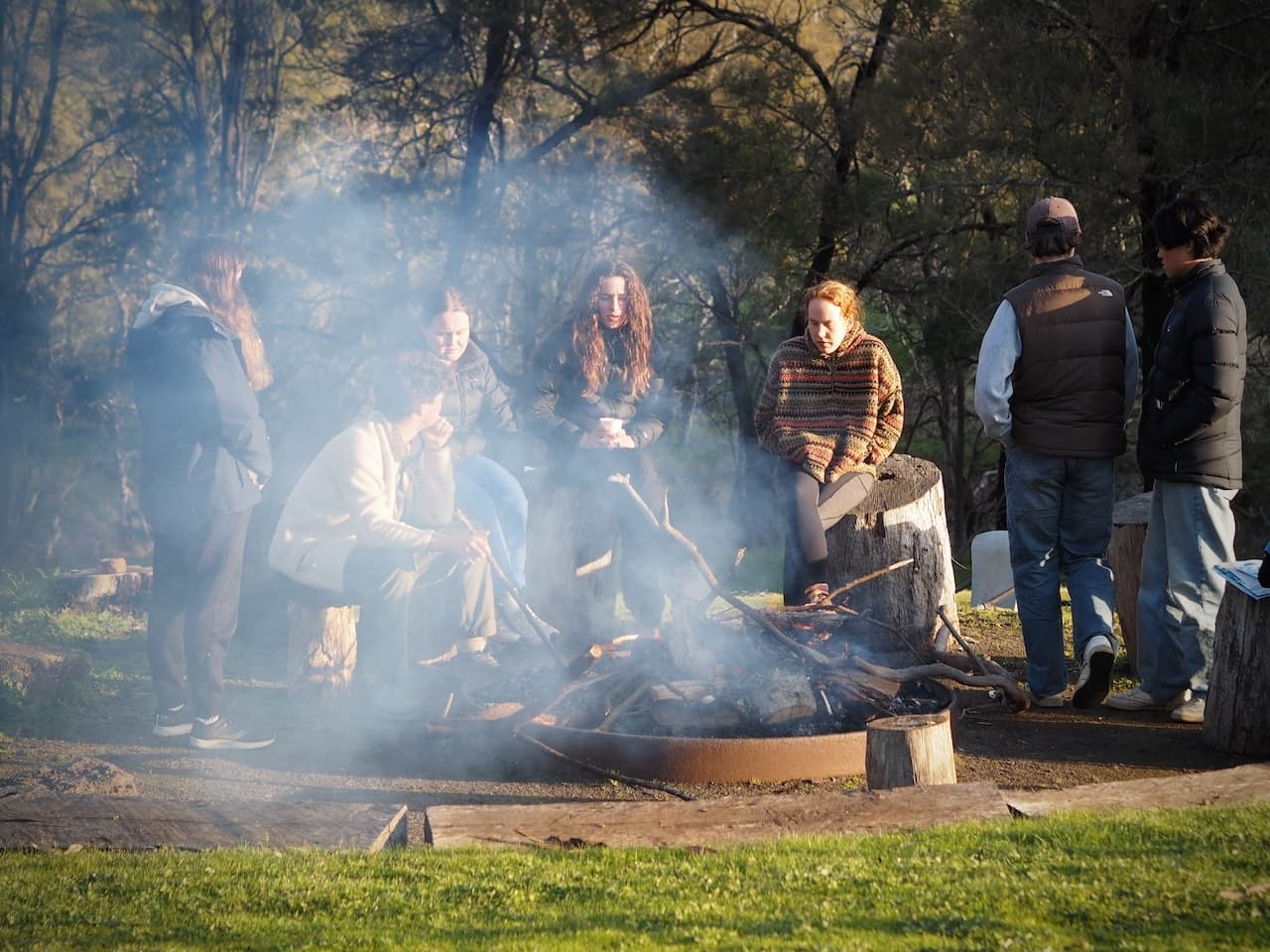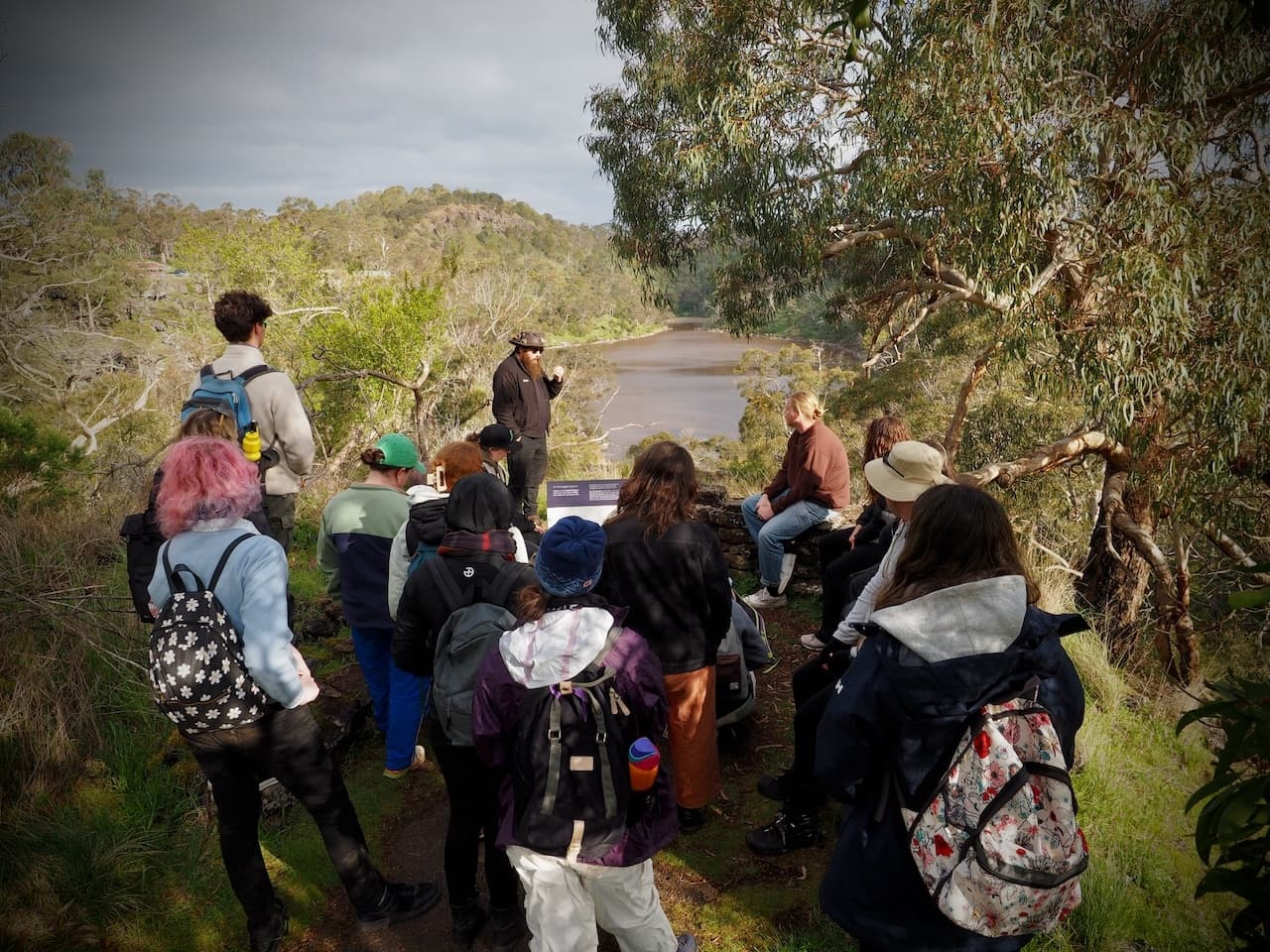Budj Bim On-Country Experience

A group of 21 students set off on a transformative three-day camp to Budj Bim, guided by Gunditjmara community leaders. The program was designed by James Kelly (Dean of Students) and supported by Emma Hoskins (Dean of Learning) and Kristen Doran-Stawiarski (Dean of Wellbeing and Development).
Sunday 1 December 2024

Budj Bim Cultural Landscape lies within the traditional Country of the Gunditjmara Aboriginal people in south-eastern Australia. Recognised by UNESCO, this site is home to one of the world’s most extensive and oldest aquaculture systems.Caleb Adams, our Indigenous Strategy Advisor, followed with an emphasis on how understanding historical contexts fosters better allyship and support for First Nations people, and that both Indigenous and non-Indigenous students could gain valuable insights into their identities.Before embarking on their journey, our students participated in a series of pre-trip sessions designed to deepen their understanding of the rich diversity, history, and contemporary landscape of Australian Aboriginal culture.The first day began with a moving smoking ceremony, followed with a hike through Budj Bim National Park, where the group visited ‘Lake Surprise’ and marvelled at the lava tubes and caves. The students then visited Lake Condah (Tae Rak), where they explored the wetlands and learned about the Gunditjmara people’s sustainable eel farming techniques. That evening, they stayed at the historic Lake Condah Aboriginal Mission, immersing themselves in the historical significance of Missions in the region and their impact on Indigenous communities.Kirsty (Kaybee) Burchill, our Fremantle Fellow, opened the discussions with a powerful message:
In order to move forward we must look back.
The session explored the deep impacts of colonisation and dispossession on Indigenous people and the resilience of their communities, setting a reflective tone for the trip.The next day, they explored Tyrendarra and Kurtonitj, focusing on traditional land management and truth-telling. The afternoon examined the history of the first massacre on Victorian soil and its profound impact on the Gunditjmara people.On the final day, the students visited Allambie IPA, where they learned about how sustainable living was essential to the community’s way of life. Their journey culminated in a visit to the Convincing Ground, where they explored contested histories and reflected on their significance.This immersive journey served as an enriching exploration of Indigenous culture, history and resilience – an experience that the students would carry with them long after they returned home. This was a unique opportunity for students to expand horizons and foster meaningful connections. First Published in New & Old Magazine | Issue No. 104 December 2024